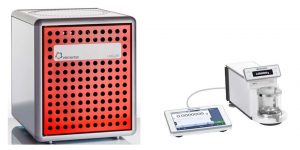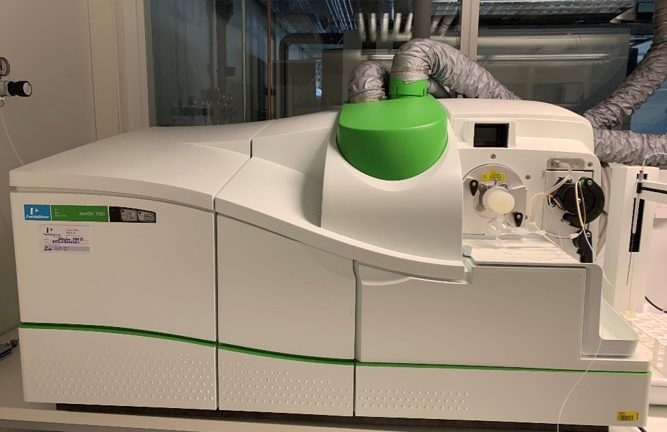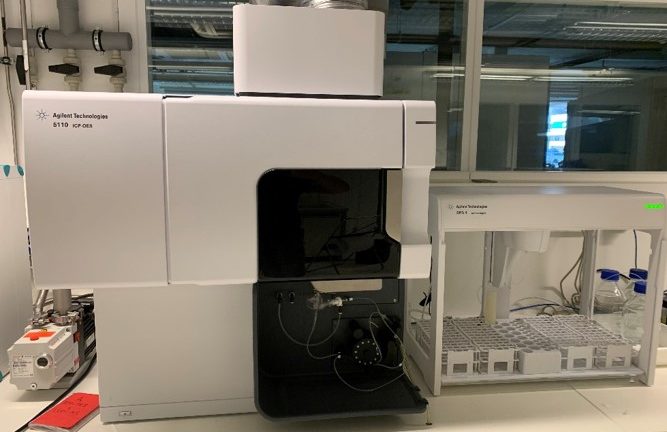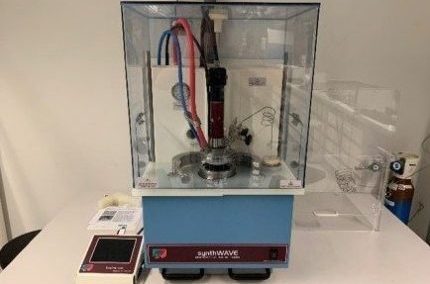CHNSO
UNICUBE® (Elementar)

This UNICUBE® is a micro elemental analyzer allows simultaneous CHNS determination with additional O option. It shows a high sensitivity and high dynamic measuring range due to the TPD (Temperature Programmed Desorption) technology for optimized reliability and performance in gas separation and due to the additional IR detector. CHNS, CHN, CNS and CN analysis are all suitable for the analysis of solid and liquid organic materials. UNICUBE functions at a permanent temperature in the combustion tube near 1,200 °C, reaching 1,800 °C during combustion. In pure oxygen, the contained sulfur is fully converted into SO2 with a 100% recovery. Carbon is converted to CO2 and detected by a real non-dispersive IR photometer. The measuring range is 0-100%, or 20 mg S absolute, with just one IR detector and sensitivity range. The measuring range for carbon is 0-100%, or up to 40 mg absolute. Even concentrations of below 1 ppm or 0.2 µg S can be detected. 1 mg of sample can be analyzed precisely.
.
ICP

The NexION® 350D inductively coupled plasma mass spectrometer features a dual-channel Universal Cell and the Dynamic Reaction Cell™ technology, giving the flexibility to choose Kinetic Energy Discrimination (KED) and/or use a scanning quadrupole in the Dynamic Reaction Cell. The instrument provides enhanced sensitivity (down to low ppt level for certain metals) and allows both precise quantitative and semi-quantitative (screening mode) analysis of various metals.

The ICP-OES 5110 inductively coupled plasma mass spectrometer allows quantitative analysis of almost all elements at a glance, except C, H N, S and O. Its Dichroic Spectral Combiner (DSC) technology enables synchronous radial and axial measurements and its vertical torch allows the measurement of challenching samples from high matrix to volatile organic solvents. This is in open-access instrument (training required).

Microwave acid digestion is the most widely used sample preparation technique for ICP-OES and ICP-MS analyses, reaching up to 300 °C and 199 bar for improved digestion step.